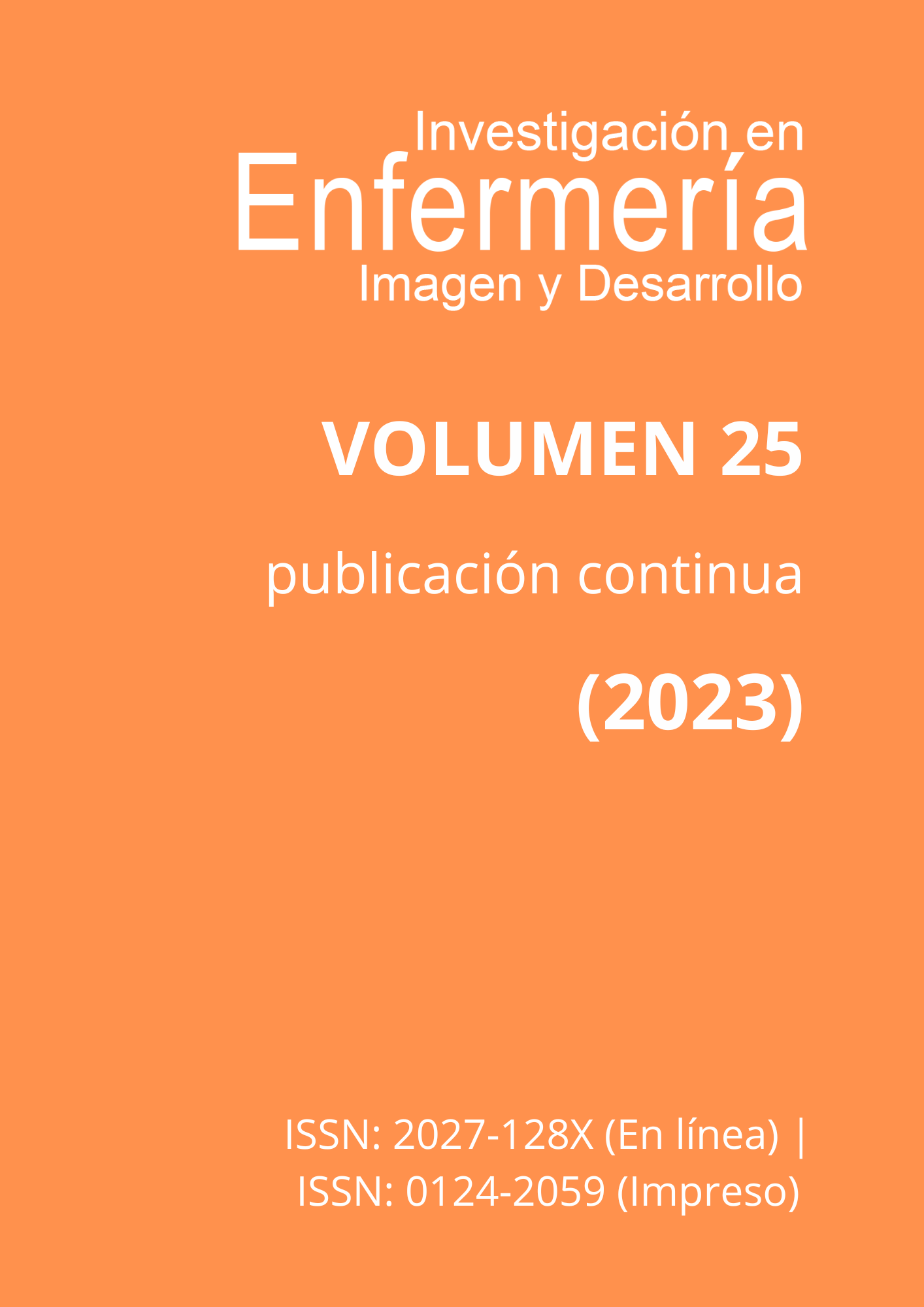The Perceptions And Challenges Of Nursing Students Related To Online Learning During COVID-19 in Guyana.-A mixed method study Percepções e desafios dos estudantes de enfermagem relacionados ao aprendizado on-line durante a COVID-19 na Guiana - Um estudo de método misto.
##plugins.themes.bootstrap3.article.details##
Objective: To explore the nursing students’ perceptions and experiences of online learning during the COVID-19 Pandemic- a mixed method.
Methods: A mixed method was used and obtained ethical approval from IRB. Quantitatively 419 nursing students’ perceptions were assessed using a valid and reliable Likert scale with 37 items through google form survey. Qualitatively five focus group discussions (6 to 8 students each) with duration of 60 to 90 minutes from respective five Schools of nursing were conducted via zoom and recorded. Codes were generated using MAXQDA analytics Pro 2022 version 22.2.1.
Results: 276 (65.87%) students agreed self-discipline is necessary for online learning. 267 (63.72%) students strongly agree that online classes reduce travel expenses. Gender had no influence on perception. Younger students showed more positive perception than older students, Senior BSN students showed positive perception compared to RN students and associations are statistically significant at <0.001.
Thematic analysis led to the following themes. Some preferred online learning due to its “flexibility” “Convenient” and “access to recorded sessions” and others preferred face to face: online learning is “good for theory only”, but for practical sessions face to face interactions is necessary, “Sense of isolation” “No student interaction” “less student- faculty interaction”. Barriers identified were “internet connectivity issues”, “Electricity issues” and “Technological issues”. Facilitators were “convenience” “reduced cost in transportation” “saves time” and opportunity to become “tech savvy”.
Conclusion: Online classes are suitable for theoretical aspects but require face to face interaction for practical components.
Key words: perceptions, online learning, nursing students.
perceptions, online learning, nursing studentspercepciones, aprendizaje en línea, estudiantes de enfermería
2. Fongkong-Mungal C, Emmanuel Sir Arthur R. (2019). Opening up access to eLearning experiences: A Caribbean case study. https://oasis.col.org/colserver/api/core/bitstreams/a7403b52-6ac9-484c-9682-30fdcc94872c/content
3. Li, W., Gillies, R., He, M., Wu, C., Liu, S., Gong, Z., et al. Barriers and facilitators to online medical and nursing education during the COVID-19 pandemic: perspectives from international students from low- and middle-income countries and their teaching staff. Human Resources for Health, 2021;19(64). https://doi.org/10.1186/s12960-021-00609-9
4. Koirala D, Silwal M, Gurung S, Bhattarai M, KC V. K. Perception towards Online Classes during COVID-19 among Nursing Students of a Medical College of Kaski District, Nepal. Journal of Biomedical Research & Environmental Sciences, 2020;1(6):249–55. https://doi.org/10.37871/jbres1151
5. Abbasi S, Ayoob T, Malik A, Memon S. Perceptions of students regarding e-learning during covid-19 at a private medical college. Pakistan Journal of Medical Sciences. 2020;S57-S61,36 (COVID19-S4) 10.12669/pjms.36.COVID19-S4.2766
6. Writing, P. E. (2023). Is Online Learning As Good As Classroom Learning In 2022? eLearning Industry [accessed on 26th July 2022]. Available on: https://elearningindustry.com/is-online-learning-as-good-as-classroom-learning-in-2022
7. Wolfe, C. (2020, November 19). Online Learning Distractions at Home. [accessed on 26th July 2022]. Available on: https://writingctr.rutgers.edu/blog/164-online-learning-distractions-at-home
8. Dutta S, Ambwani S, Lal H, Ram K, Mishra G, Kumar T, et al. The satisfaction level of undergraduate medical and nursing students regarding distant preclinical and clinical teaching amidst covid-19 across India. Advances in Medical Education and Practice, 2021;12:113–22. https://doi.org/10.2147/AMEP.S290142
9. Subedi S, Nayaju S, Subedi S, Shah S K, Shah J M. Impact of E-learning during COVID-19 Pandemic among Nursing Students and Teachers of Nepal. International Journal of Science and Healthcare Research, 2020;5(3):68-76 https://ijshr.com/IJSHR_Vol.5_Issue.3_July2020/IJSHR0012.pdf
10. Thapa P, Bhandari S L, Pathak S. Nursing students’ attitude on the practice of e-learning: A cross-sectional survey amid COVID-19 in Nepal. PLoS ONE, 2021;16(6 June). https://doi.org/10.1371/journal.pone.0253651
11. Asio J. M. R, Gadia E, Abarintos E, Paguio D, Balce M. Internet Connection and Learning Device Availability of College Students: Basis for Institutionalizing Flexible Learning in the New Normal. Studies in Humanities and Education, 2021;2(1):56-69. https://doi.org/10.48185/she.v2i1.224
12. Puksa, M. M., Janzen, K. Faculty perceptions of teaching nursing content online in prelicensure baccalaureate nursing programs. Journal of Nursing Education. 2020;59(12):683-91. https://doi.org/10.3928/01484834-20201118-05
13. Ramos-Morcillo, A. J., Leal-Costa, C., Moral-García, J. E., Ruzafa-Martínez, M. Experiences of nursing students during the abrupt change from face-to-face to e-learning education during the first month of confinement due to COVID-19 in Spain. International Journal of Environmental Research and Public Health. 2020;17(15):1-15. https://doi.org/10.3390/ijerph17155519
14. Shun, S. C. COVID-19 Pandemic: The Challenges to the Professional Identity of Nurses and Nursing Education. Journal of Nursing Research: JNR, . 2021;29(2): e138. https://doi.org/10.1097/JNR.0000000000000431
15. Thapa, P., Bhandari, S. L., Pathak, S. Nursing students’ attitude on the practice of e-learning: A cross-sectional survey amid COVID-19 in Nepal. PLoS ONE. 2021;16(6 June). https://doi.org/10.1371/journal.pone.0253651
16. Almahasees, Z., Mohsen, K., Amin, M. O. Faculty’s and Students’ Perceptions of Online Learning During COVID-19. Frontiers in Education. 2021; 6. https://doi.org/10.3389/feduc.2021.638470
17. Almahasees, Z., Qassem, M. Faculty perception of teaching translation courses online during Covid-19. PSU Research Review, ahead-of-print(ahead-of-print). 2021. https://doi.org/10.1108/prr-12-2020-0044
18. Al-mazidi, S. H. The impact of covid-19 pandemic on undergraduate medical teaching: An experience of Saudi Arabia medical colleges. Journal of Nature and Science of Medicine. 2021;4(3):220-5. https://doi.org/10.4103/jnsm.jnsm_2_21
19. Bali, S., Liu, M. C. Students’ perceptions toward online learning and face-to-face learning courses. Journal of Physics: Conference Series. 2018;1108(1). https://doi.org/10.1088/1742-6596/1108/1/012094
20. Bdair, I. A. Nursing students’ and faculty members’ perspectives about online learning during COVID-19 pandemic: A qualitative study. Teaching and Learning in Nursing. 2021;16(3):220-6. https://doi.org/10.1016/j.teln.2021.02.008

This work is licensed under a Creative Commons Attribution 4.0 International License.


